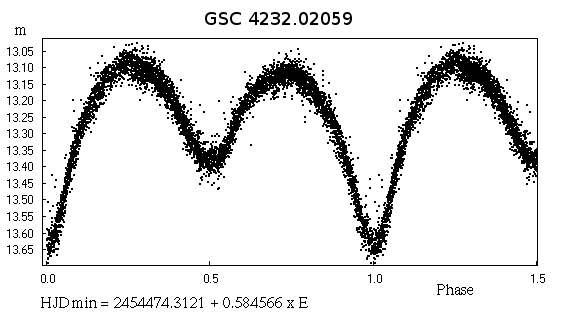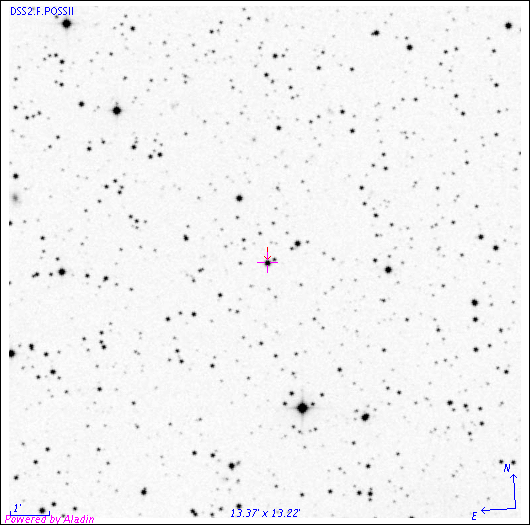"Peremennye Zvezdy",
Prilozhenie,
vol. 8, N 2 (2008)
Prilozhenie,
vol. 8, N 2 (2008)
GSC 4232-02059 - a New Beta Lyrae System
K. V. Sokolovsky#1,2, D. O. Chekhovich#3, S. A. Korotkiy#4
#1 Sternberg Astronomical Institute, Moscow State University;
#2 Astro Space Center of the Lebedev Physical Institute, Russian Academy of Sciences;
#3 Visiting observer, Ka-Dar Public Observatory;
#4 Ka-Dar Public Observatory
#2 Astro Space Center of the Lebedev Physical Institute, Russian Academy of Sciences;
#3 Visiting observer, Ka-Dar Public Observatory;
#4 Ka-Dar Public Observatory
Received: 8.09.2007; accepted: 8.02.2008
(E-mail for contact: idkfa@sai.msu.ru)
| ||||||||||||||||||||||
Remarks: |
| Variability of GSC 4232-02059 was detected on a series of 354 30-second exposures
taken
on August 8, 2007 with a Vixen
(D=102mm, F=795mm) refractor equipped with an SBIG ST2000XM unfiltered CCD
camera. The observations were carried out at the Ka-Dar public observatory,
Moscow Region.
To combine our unfiltered photometry with publicly available NSVS (Wozniak et al., 2004; http://skydot.lanl.gov/nsvs/nsvs.php) data, we shifted the zero point of our light curve to match its magnitude at maximum light to the magnitude at maximum of the NSVS light curve. The combined light curve allows us to classify GSC 4232-02059 as an EB-type eclipsing binary system. To reliably determine the period of variability, we have conducted additional observations on January 5 - 11, 2008 at the mountain station of the Kazan State University (Karachay-Cherkessia, Russia). We have used a Celestron 80ED (D=80mm, F=600mm) refractor with the same ST2000XM camera. We have obtained 5297 30-s exposures. As in the case of the first observing session at the Ka-Dar observatory, the 30-s exposure time was chosen because of bad tracking. Despite GSC 4232-02059 was observed near its lower culmination, perfect sky conditions allowed us to achieve sufficient photometric quality. The light elements were determined for the primary minimum: HJDmin = 2454474.3121 + 0.584566 x E. The primary minimum is about 0.27 mag deeper than the secondary one. The maximum which follows the secondary minimum is by 0.05 mag fainter than that which follows the primary minimum (positive O'Connell effect). Acknowledgments: We have made use of the Aladin Sky Atlas, operated at CDS, Strasbourg, France. The authors are grateful to V.P. Goranskij for providing software used for our light-curve analysis, to S.V. Antipin for advice about classification of the star, and to T.V. Kryachko for his assistance in organizing observations at the KSU mountain station. |
| References: |
| Wozniak, P.R., Vestrand, W.T., Akerlof, C.W., et al., 2004, AJ, 127, 2436 |
Light Curve
The light curve of GSC 4232-02059 in the magnitude scale of NSVS 3145773. Finding Chart 
Data Source |